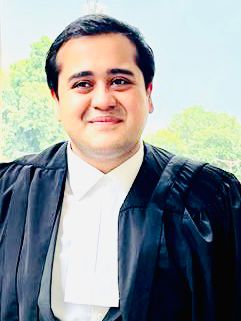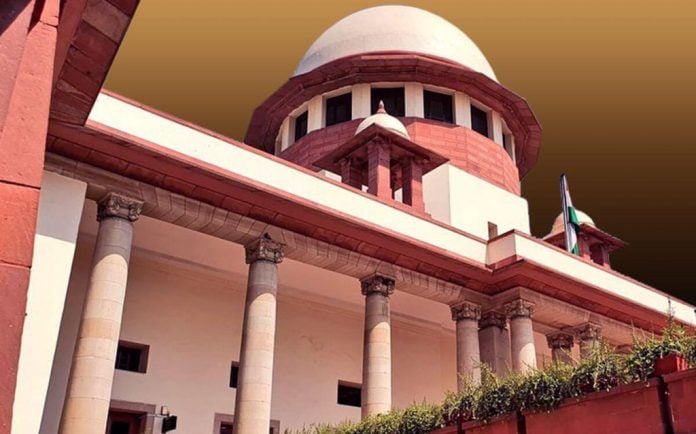By Neeleshwar Pavani
Visuals splashed across newspapers and social media recently depicted the parents of the young 19-year-old woman, who had been raped and murdered over 10 years ago, in a distraught condition and deeply aggrieved by the judgment of the Supreme Court acquitting the three accused who had been sentenced to death by the Trial Court and upheld by the High Court. On appeal to the Supreme Court by the death row convicts, a bench of three judges headed by the then Chief Justice of India U.U. Lalit, Justices Ravindra Bhat and Bela Trivedi decided to acquit them who had been destined to the gallows.

Now, the decision, of course, has brought home to the victim’s family despair, shock as well disappointment and a general sense of accompanying societal disapproval for the Court to let go of three persons who have raped, murdered and discarded the body of a young woman, who had her life and future ahead of her, and for her family of the father, who is a watchman, and the mother having to face the despondency of becoming orphaned parents in their middle age and the lost aspirations of their daughter having led a normal life. It is also the fact that she was brutally raped by the insertion of car tools such as a jack and a spanner by the three convicts.
Before delving into the emotional aspects and being drowned in the stream of sentimentality, it is important to understand the facts surrounding the case that led the Court to acquit the persons who were convicted by the courts below.
The Court, initially on receipt of the appeals, found that no senior lawyer was willing to appear for the accused and was constrained to appoint an Amicus Curaie. The circumstances that led to deciding that the accused deserved (maybe wrongly) a full and complete acquittal are as follows:
- The identification of the accused persons did not happen upon their arrest.
- Only 10 out of 49 witnesses were examined and cross-examined at Trial and material witnesses’ testimonies were not taken into account while arriving at the conviction.
- Since recoveries were made almost a week to 10 days there was no independent witness who could testify that recoveries of articles were done in her/his presence.
- Since the body of the victim was recovered from Jhajjar, Haryana and she was abducted from Delhi, there was an issue of jurisdiction of which police force would handle the matter and initially both Haryana and Delhi’s police were looking into the matter. The Court found a large number of discrepancies in the statements of the police inter se.
- The evidence collected by the Police could not be scientifically proven, even though DNA collected from the car seat matched with the semen sample/DNA of the convicted.
- None of the 10 prosecution witnesses before the Trial Court could identify the car in which the incident took place.
- The call detail records of the accused persons did not sufficiently show the complicity of them in the incident or their presence at the spot.
These contentions were vehemently opposed by the State who supported the prosecution case for upholding the death penalty imposed on them. Furthermore, the lawyer for the State appealed that the Court should not interfere, (correctly so) so drastically with the concurrent findings of two courts below and that the DNA collected from the car seats matched with the deceased’s DNA and merely because the post-mortem could not precisely pinpoint the exact date and time of death should not be construed to be benefitting the accused in any manner as they had committed the act with cold brutality and remorselessness. The ASG reminded the Court that this was yet another ghastly rape in a moving car.
However, the Court was not impressed with any of these arguments as it held that principles of a fair trial were not complied with and the prosecution was after the accused with a blind passion. More than this was the fact that there were glaring lapses and omissions in the investigation, mostly in my opinion due to the fight between Haryana Police and Delhi Police over territorial jurisdiction to inquire into the matter and consequent botching up of statements and material & factual discrepancies in the statements of the Police. The Court reasoned that the witnesses did not identify the accused in Court and 39 of the witnesses’ statements were not even recorded and produced before the trial court in the form of testimonies so as to clinch the case of the prosecution against the accused and give them the justified and commensurate punishment after examination and cross examination of the witnesses.
Furthermore, it observed that even Test Identification Parade was not conducted where any of the eye-witnesses identified the assailants. Therefore, it principally based its acquittal on the simple and oldest legal principle in an adversarial system, namely — that a lapse on the ground of the prosecution would stand to benefit the accused. Our entire Code of Criminal Procedure has this principle as its very core along with other essential philosophies on the criminal justice.
Therefore, the Supreme Court reasoned that the evidence presented before the Trial Court was not even enough to secure a conviction with ordinary minimum imprisonment of 14 years for murder and rape much less was it a case for awarding the death penalty.
Legally speaking, there was manifest injustice in the case not because that the three men have been acquitted but as there could not be any cogent evidence collected and presented before the trial court due to a totally messy investigation. However, having said that this was, in my humble opinion, not even a case for imposition of death penalty also as the factors meriting a death sentence have been elaborately laid down in the case of Bacchan Singh V. State of Punjab1 by classifying them as the ‘rarest of rare’ and further developed in Machi Singh V. State of Punjab2 where a Court has been more conscious in awarding the death sentence and that a prosecuting Court must abide by the guidelines laid down in those cases and independently assess whether the actions committed meet the parameters objectively to merit a death penalty.
It would be important to see what actually are the factors developed in Machi Singh. They are–
- Manner of Commission of Crime.
- Motive of Commission of Murder.
- Magnitude of the crime committed.
- Personality of the victim who was murdered.
- Aggravating and Mitigating Circumstances in that case.
This particular case did not justify the imposition of the death penalty as the crime committed did not satisfy the requirements of such a punishment as enumerated in previous landmark decisions of the Supreme Court, instead a punishment of Life Imprisonment would be justified, according to me. The Court instead of acquitting the accused wholesale could have considered commuting their sentence to life imprisonment as that would also sub-serve the interest of society and respect the loss that the family of the deceased suffered. The Court could have also moulded appropriate relief in this matter, for example, allow the person to apply for remission after 14 years as is done ordinarily. Definitely, this case was not the best suited for heralding the death penalty but maybe it wasn’t a case for acquittal either. However, as the Supreme Court’s decision is final, hence it is binding and right.
In defence of the Supreme Court’s stand on this issue, where it felt that the case may be purely a case of mistaken identity or a case of totally insufficient evidence and noticing the accused have undergone almost a period of 11 years of imprisonment and deserved back their freedom, it would be relevant to quote Douglas N. Husak, a legal scholar and philosopher in Rutgers University in the United States. Husak writes in his book on the philosophy of criminal law-
“First it is important to appreciate that criminal theory, like the actual practice of law, is a discipline with an internal bias towards conservatism. The legal authority may be unique in that he distinguishes himself by demonstrating that his scholarship is unoriginal. It is exceedingly difficult to dislodge principles that are firmly in place and upheld by great weight of authority. Such entrenchment and widespread support are frequently cited as conclusive evidence that legal principles must be correct. Some theorists apparently believe that legal principles should be preserved simply because they represent the accumulated wisdom of ages. Anyone who hopes to be taken seriously by legal principles who share this methodological orientation cannot reject too much conventional wisdom all at once.”
But one thing is sure and clear as a result of this case, namely emotions and sentimentality cannot be the yardstick for deciding cases and certainly not deciding death case references but neither can the cold word of the law divorced from the brutal reality etched in age old legalisms.
Lastly, it is clear that cases, day in and day out suffer injustice due to the omissions and inaction of the investigative agencies. Hence, it therefore necessary for genuine criminal prosecutions to fructify that the investigative arm of the police is kept separate from the law enforcement agencies.
Neeleshwar Pavani is an independent advocate practicing in the courts of Delhi
Footnotes
1 (1980) 2 SCC 684
2 (1983) 4 SCC 470


